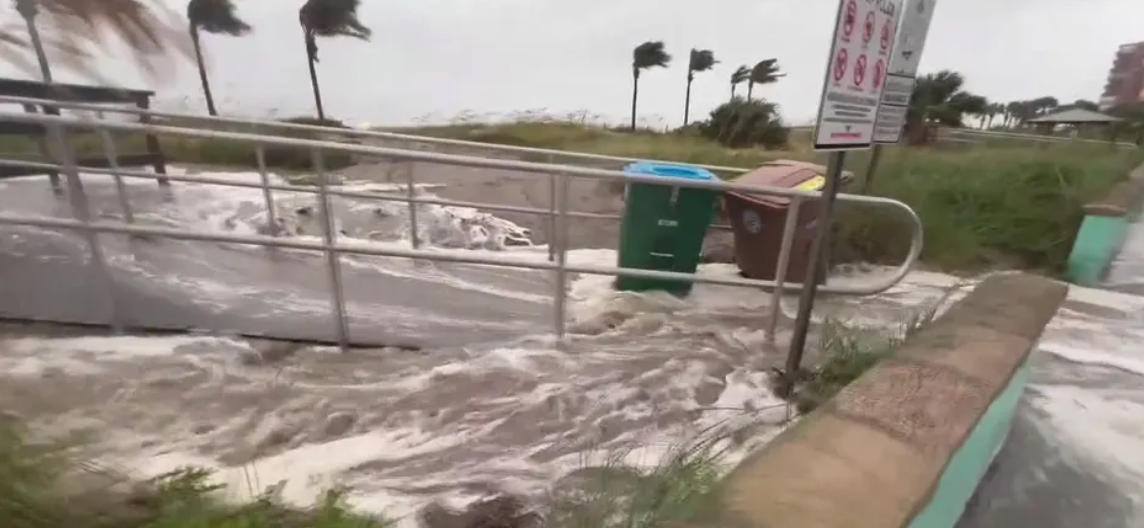Donna Fagersten had taken refuge at a friend’s home on the top floor as Hurricane Helene tore through northern Florida, leaving a devastating trail of destruction and more than 100 casualties in the southeastern U.S.
As the storm appeared to calm, the 66-year-old teacher, just days away from her retirement, made a fateful choice to return home to rescue her cat.
When Hurricane Helene hit Florida on September 26, 2024, around 11 p.m., the Category 4 storm triggered flash floods, forcing residents to scramble for safety. One of the hardest-hit areas was Pinellas County, particularly in the Tampa Bay region, where at least 11 people lost their lives.

Among the victims was Donna Fagersten, a second-grade teacher from Ponce De Leon Elementary in Pinellas County.
According to her best friend Heather Anne Boles, Donna was set to retire the following week after dedicating 35 years to teaching. When the storm hit, Donna sought shelter with Boles and her partner, Mike Moran. As the storm surge rushed in, they retreated to the third floor of Boles’ mother’s home, across from the beach where Donna lived.
Boles recalled that as the storm seemed to settle, Donna insisted on going home to check on her cat, despite Boles’ pleas to stay. Tragically, another surge and high winds returned, battering the coastline.
A neighbor later came to their shelter, reporting that someone had been found floating in the parking garage. They quickly pulled Donna from the water and began CPR, but despite their efforts and the arrival of fire rescue by boat, they were unable to revive her.
Detectives later confirmed that Donna had drowned in her home, which had been flooded with water.
Family and friends have since remembered Donna as a “beautiful person” who was deeply committed to her students and community. In a Facebook post, Mary Gleason Lyons, a colleague and friend, described Donna as a dedicated teacher with a big heart, touching the lives of many students over her 35-year career.

Online tributes poured in, with former students and friends expressing their sadness at her passing and remembering her kindness and warmth.
While Boles and Moran are now left to clean up after the floods, which destroyed most of their belongings, the loss of their best friend is what hurts the most. “This is the worst we have ever seen,” Boles said, reflecting on the storm’s destruction compared to Hurricane Irma, where they managed to keep their home and belongings intact.
On a positive note, Donna’s cat survived, and her friends are working to find him a new home.
Hurricane Helene, which cut a destructive 800-mile path northward, left more than 2 million homes without power and claimed over 100 lives, according to USA Today.
РRIMЕ RIВ
When it comes to a sumptuous and savory meal, prime rib takes the crown. This cut of beef is known for its tenderness, juiciness, and rich flavor. If you want to impress your guests or simply treat yourself to a special meal, mastering the art of cooking prime rib is a must. In this comprehensive guide, we’ll walk you through the process, from selecting the perfect prime rib to serving it likе a pro.
Selecting the Right Prime Rib
Choosing the Cut
Selecting the right prime rib is the first step to culinary success. Look for a bone-in prime rib roast weighing between 6-8 pounds. The bone enhances the flavor and juiciness of the meat.
Seasoning and Preparation
Before you start cooking, season the prime rib with 2 tablespoons of olive oil, salt, and pepper. For an extra burst of flavor, consider inserting optional garlic cloves into the roast using a paring knife.
Cooking the Perfect Prime Rib
Initial Roasting
- Preheat your oven to a scorching 500°F (260°C).
- Place the prime rib roast on a rack in a roasting pan.
- Rub the roast with olive oil and generously season it with salt and pepper.
- If desired, you can insert garlic cloves into the roast using a paring knife for a delightful infusion of flavor.
Roasting to Perfection
- Place the roasting pan in the oven and roast the prime rib at 500°F for 15 minutes. This high-temperature initial roast will seal in the juices and create a flavorful crust on the outside.
- Reduce the oven temperature to 325°F (160°C) and continue roasting the prime rib until it reaches your desired level of doneness. Use a meat thermometer to check the internal temperature for precision. For medium-rare, aim for 135°F (57°C). Medium enthusiasts should target 140°F (60°C), while those who prefer well-done should go for 150°F (66°C).
- Remove the roast from the oven and allow it to rest for 15-20 minutes before slicing and serving. Resting is crucial to retain the juices and ensure a succulent prime rib.



Leave a Reply